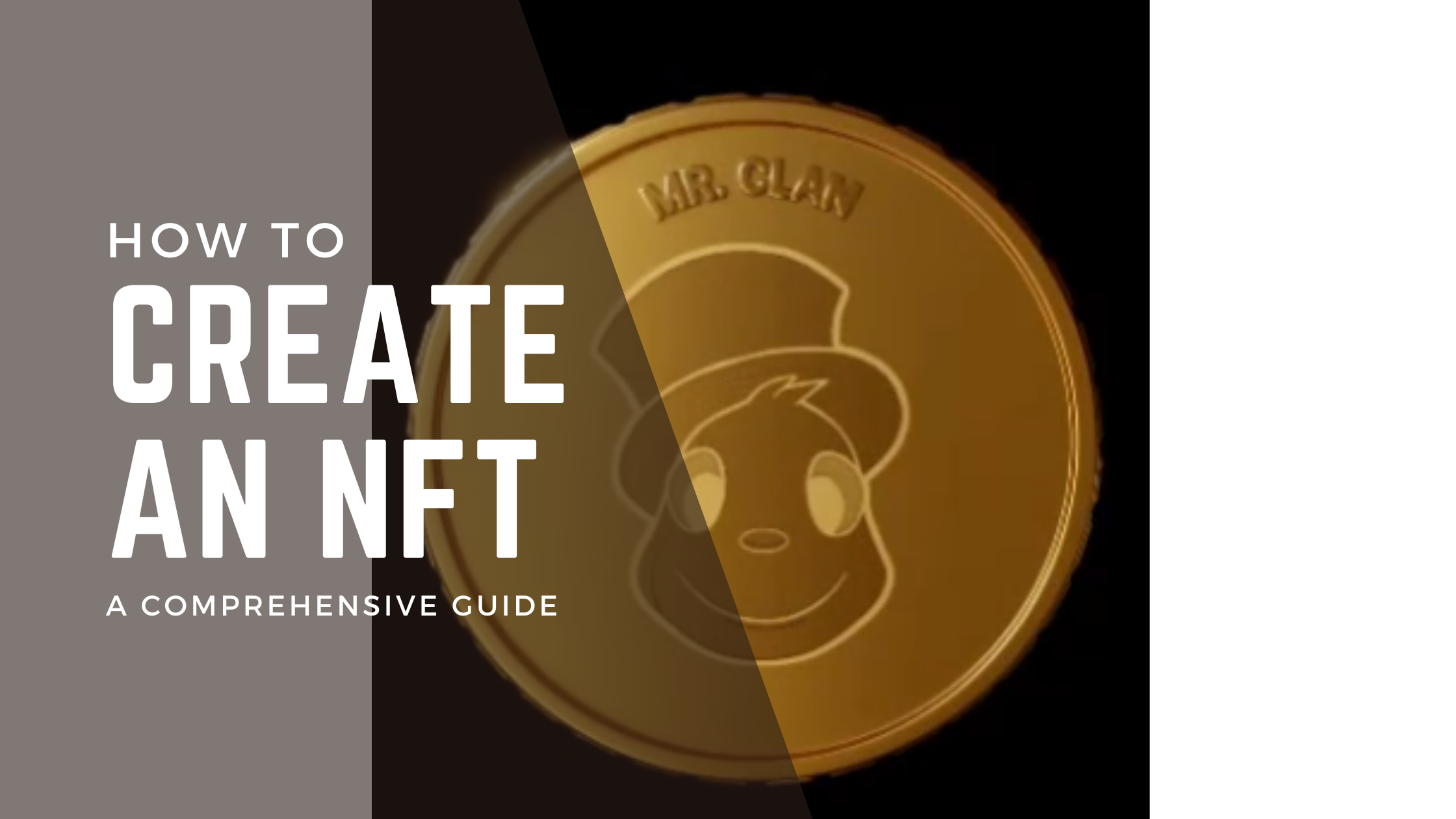
In the digital age, non-fungible tokens (NFTs) have emerged as a groundbreaking technology that allows individuals to represent ownership and prove authenticity of various digital assets. From digital art and music to videos and collectibles, NFTs provide creators with new monetization opportunities and revolutionize the way we perceive and trade digital assets.
In this comprehensive guide, we will walk you through the process of creating an NFT, step by step. We will cover everything from understanding the concept of NFTs to choosing the right blockchain platform, setting up a digital wallet, and listing your NFT for sale. By the end of this guide, you will have a solid understanding of how to navigate the world of NFTs and unleash your creative potential.
What Is an NFT?
Before diving into the process of creating an NFT, let's first understand what exactly an NFT is. NFTs, or non-fungible tokens, are digital assets that represent ownership of unique objects in the digital realm. Unlike cryptocurrencies such as Bitcoin or Ethereum, which are interchangeable and can be divided into smaller units, NFTs are indivisible and cannot be easily edited, copied, or duplicated.
The uniqueness and scarcity of NFTs are what give them their value. Each NFT is stored on a publicly verifiable decentralized ledger, typically a blockchain. This ensures the immutability and transparency of the ownership record, making it impossible to forge or counterfeit NFTs.
NFTs have gained immense popularity in recent years due to their ability to provide creators with new ways to monetize their digital assets. Artists, musicians, game developers, and even individuals with no prior experience in the creative field can create and experiment with NFTs, thanks to the open and decentralized nature of blockchain technology.
Top NFT Use Cases
NFTs have found applications in various industries, opening up new possibilities for creators and collectors alike. Let's explore some of the top use cases for NFTs:
Art
One of the most prominent use cases for NFTs is in the world of digital art. Artists can tokenize their digital creations, including images, interactive pieces, and even AI-generated art, as NFTs. This allows them to not only showcase their work in the digital realm but also sell and track their art on the blockchain. NFTs have revolutionized the art market by providing artists with a direct connection to their audience and enabling them to monetize their creations without the need for intermediaries.
Videos
Videos, including movies, music videos, and sports clips, can also be represented as NFTs. By tokenizing videos, creators can reach a global audience and monetize their work in a whole new way. NFTs allow video creators to sell their content directly to fans, bypassing traditional distribution channels. This opens up opportunities for independent filmmakers, musicians, and content creators to gain recognition and generate revenue from their videos.
Music
Musicians and sound creators can now leverage NFTs to directly connect with their fans and monetize their music. By tokenizing their songs, albums, or even concert tickets, musicians can sell their work without relying on record labels or streaming platforms. NFTs enable artists to retain greater control over their music and offer unique perks to their fans, such as access to exclusive content or limited-edition releases. This direct relationship between artists and fans fosters a stronger sense of community and support.
Game NFTs and Collectibles
NFTs have made a significant impact in the gaming industry, allowing for the creation and trade of digital collectibles. These collectibles can take the form of trading cards, virtual pets, or in-game items such as weapons, armor, and skins. NFTs provide gamers with true ownership and the ability to trade their digital assets in a secure and transparent manner. This opens up new possibilities for game developers to create immersive gaming experiences and for players to engage in a thriving virtual economy.
Who Can Create NFTs?
One of the remarkable aspects of NFTs is their accessibility. Virtually anyone with internet access can create an NFT, regardless of their background or expertise. The democratization of blockchain technology has made it possible for artists, musicians, game developers, and individuals from all walks of life to experiment with NFTs and explore their creative potential.
However, creating an NFT does require some understanding of blockchains and the process of minting NFTs. To successfully create an NFT, you need to familiarize yourself with the blockchain platform you choose, set up a digital wallet, and navigate the NFT marketplace where you plan to list your creations.
How to Create an NFT
Now that we have covered the basics, let's dive into the step-by-step process of creating an NFT. Follow these steps to turn your digital assets into unique and valuable tokens:
Step 1: Choose a Blockchain
The first step in creating an NFT is to choose a blockchain platform on which to mint your tokens. While Ethereum is the most widely used blockchain for NFTs, there are several other options available, such as BNB Chain, Cardano, Solana, and EOS. Each blockchain has its own specific requirements, fees, and compatible wallets, so it's essential to research and choose the one that best suits your needs.
Consider factors such as transaction fees, scalability, community support, and the overall ecosystem of the blockchain platform. Keep in mind that once you mint an NFT on a particular blockchain, you cannot change it later, so choose wisely.
Step 2: Set Up a Digital Wallet
To manage your NFTs and interact with the blockchain, you will need to set up a digital wallet. A digital wallet is a software application that allows you to securely store, send, and receive cryptocurrencies and NFTs. Each blockchain platform typically has its own compatible wallets.
When setting up your digital wallet, make sure to choose one that is compatible with the blockchain platform you selected in the previous step. Ensure you store your private key or seed phrase securely, as losing access to your wallet can result in the loss of your NFTs and cryptocurrencies.
You will also need to acquire the native cryptocurrency of your chosen blockchain to cover the gas fees incurred during the minting process. You can purchase the required cryptocurrency on a cryptocurrency exchange or directly through your wallet, depending on the functionality of the wallet.
Step 3: Choose an NFT Platform
After setting up your digital wallet, the next step is to choose an NFT platform where you can create and sell your NFTs. There is a growing list of NFT marketplaces available, each with its own features and characteristics. Some marketplaces are full-service, allowing you to mint, list, and sell your NFTs all in one place.
When selecting an NFT platform, consider factors such as the platform's user interface, fees, community engagement, and the overall reputation of the marketplace. Ensure that the platform is compatible with the blockchain you have chosen and that it provides the necessary tools and features to showcase your NFTs effectively.
Step 4: Create Your NFT
Once you have chosen the blockchain and NFT platform, it's time to create your NFT. The specific steps may vary depending on the platform you selected, but here are some general guidelines:
- Connect your digital wallet to the NFT marketplace.
- Look for the option to create or mint an NFT within the marketplace.
- Provide the necessary information and settings for your NFT, such as the media file, name, description, and any additional perks or limitations.
- Upload the media file that you want to tokenize as an NFT. The file format will depend on the type of digital asset you are creating, such as JPG or PNG for images and GLB for 3D artwork.
- Fill in the details for your NFT, including a captivating name, a compelling description, and any unique features or benefits you want to offer.
- Once you have provided all the required information, click the "Create" or "Mint" button to finalize the creation of your NFT.
Step 5: List Your NFT for Sale
After creating your NFT, you have the option to list it for sale on the marketplace. While this step is optional, it allows you to promote and monetize your creation effectively. To list your NFT for sale, follow these steps:
- Find the option to list your NFT on the marketplace.
- Set your desired price and choose any additional terms or conditions for the sale.
- Consider factors such as rarity, utility, and market trends when determining the price of your NFT.
- Take into account the feedback and suggestions from the community of NFT creators and collectors.
- Once you have set the price and terms, your NFT will be listed on the marketplace and available for potential buyers.
How Much Does It Cost to Create an NFT?
Creating an NFT involves various costs, primarily related to the blockchain network and the NFT marketplace. Here are some of the costs you should consider:
Blockchain Transaction Fees: When you mint an NFT on a blockchain, you need to pay transaction fees to the network for processing and validating your transaction. These fees are typically paid in the native cryptocurrency of the blockchain and can vary depending on network congestion and demand.
NFT Marketplace Fees: Some NFT marketplaces charge a fee for creating an NFT. This fee may be a fixed amount or a percentage of the sale price of the NFT. Be sure to research and understand the fee structure of the marketplace you choose.
Platform Fees or Commissions: If you decide to sell your NFT on a marketplace, you may be subject to additional fees or commissions imposed by the platform. These fees can vary from platform to platform, so it's essential to review and compare the fee structures.
Digital Storage Costs: NFTs require digital storage space to host and store the associated media files. Depending on the marketplace or storage provider you choose, there may be costs associated with hosting and storing your NFTs. Consider these costs when planning your NFT creation and long-term storage strategy.
It's important to carefully consider the costs involved in creating an NFT and factor them into your overall pricing strategy.
How to Price Your NFT
Pricing an NFT can be a challenging task, as various factors influence its value. Here are some steps you can take to determine the right price for your NFT:
Evaluate Uniqueness and Utility: Consider the rarity and functional use of your NFT within virtual ecosystems. Unique and utility-driven NFTs tend to have higher value and demand.
Research Market Trends: Study the current market trends and analyze the prices of similar NFTs. Look for comparable collections or artworks to gauge the market value.
Engage with the Community: Seek feedback and advice from other NFT creators and collectors. The crypto community is known for its supportive nature, and fellow creators can provide valuable insights into pricing strategies.
Remain Flexible: The pricing of an NFT is both an art and a science. Be open to revising your prices based on community feedback and evolving market conditions. Regularly assess the demand for your NFT and adjust the price accordingly.
Remember, pricing an NFT is a dynamic process, and it's crucial to stay informed and adaptable to maximize the potential value of your creation.
Copyright and Stealing NFT Content
As with any creative work, copyright protection applies to NFTs. It's essential to respect the intellectual property rights of others and ensure you have the necessary permissions and rights to use the content for your NFTs.
To protect yourself and your NFTs, either own the rights to the content or obtain permission from the original creator. Unauthorized use of someone else's work not only carries legal consequences but also undermines the integrity of the NFT ecosystem. Show respect for the original creators and their intellectual property by seeking proper permission and acknowledging their work.
NFTs have opened up a world of possibilities for creators, collectors, and enthusiasts. By harnessing the power of blockchain technology, you can transform your digital assets into unique and valuable tokens. From digital art and music to videos and collectibles, the possibilities are endless.
In this comprehensive guide, we have walked you through the process of creating an NFT, from understanding the concept to choosing the right blockchain platform, setting up a digital wallet, and listing your NFT for sale. We have explored the top use cases for NFTs and discussed the importance of pricing and copyright protection.
Now armed with this knowledge, it's time to unleash your creativity and join the exciting world of NFTs. Embrace the power of blockchain technology and create something truly unique and valuable.
OUR OFFICIAL CHANNELS
Website - https://www.clanity.com/
Discord - https://discord.gg/6rDdVwextJ
Telegram - https://t.me/clanity
Twitter - https://twitter.com/clanityofficial
Facebook - https://www.facebook.com/clanityofficial
Linkedin - https://www.linkedin.com/company/clanityofficial/
Medium - https://medium.com/@clanity
Reddit - https://www.reddit.com/r/Clanity/
Instagram - https://www.instagram.com/clanityofficial/
Getting your business started with Blockchain?
Getting your business started with Blockchain?
Start the right way to do business with blockchain at Clanity!

